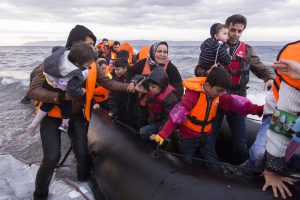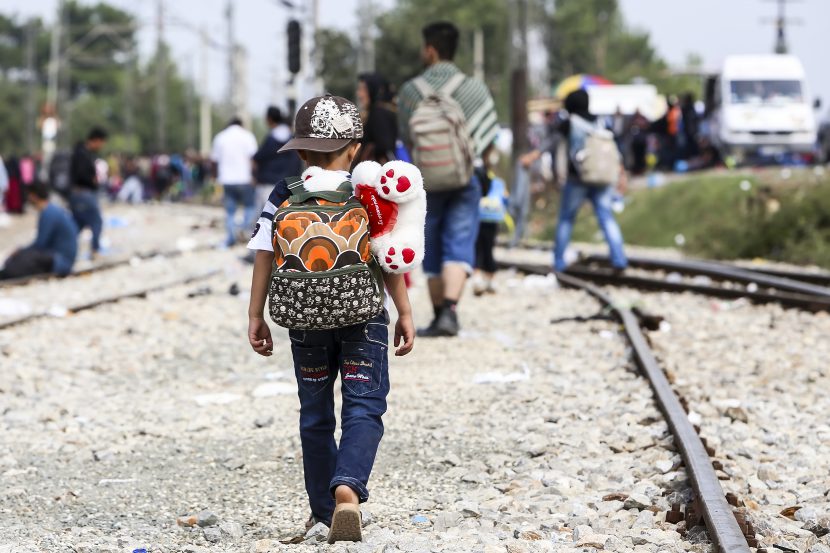“There is the desert to cross, it was hard. We can come here, take a blade, kill you because you drank the water or because you paid the bread to eat. We can tear off your money, take a blade, kill you … “ (RFI Africa, 2019).
These words are those of Junior, a young Ivorian who was 9 years old when he was trying to leave his country alone to join Europe.
Like Junior, today many children migrate independently. They are called unaccompanied minors or are referred to as “children on the move”.
A phenomenon of great magnitude
These children are qualified by many terms. They are refugees, asylum seekers, nomads or unaccompanied or separated children.
Some start this trip alone and others, victims of events, are separated from their family or loved ones who had their load during this trip.
Whatever the case may be, child migration is a reality in which the world must mobilize.
At least 200,000 unaccompanied and separated children were registered in about 80 countries in 2015 and 2016 (United Nations Children’s Fund UNICEF, 2017).
There are 170,000 unaccompanied children who have sought asylum in Europe in those years (United Nations Children’s Fund UNICEF, 2017).
100,000 unaccompanied children were arrested at the Mexican-US border, and 19,000 sought asylum in other countries (United Nations Children’s Fund UNICEF, 2017).
These statistics reflect the magnitude of a phenomenon that continues to grow for various reasons.
The reasons for such a phenomenon
These children are mainly driven by incessant crises and protracted conflicts. The environment that continues to deteriorate through the actions of men, climate change and natural disasters also force these children to migrate. We can also mention poverty and growing inequalities in some regions.
Some more personal reasons encourage these children to undertake such a journey. It is about finding a better way of life, that is, better access to quality education and work opportunities. Many children decide to leave the family cocoon to escape the prospect of forced marriage and genital mutilation (International Institute for the Rights of the Child, 2014).
A large number of children moving north from Central America have at least one parent or relative who already resides in the United States (United Nations Children’s Fund UNICEF, 2017). Some children travel to join their family, or a relative who is abroad.
The reasons mentioned above are noble. However, these defenseless beings are exposed to many dangers during this trip.
Risks incurred during the migration

The dangers to which these children are exposed in search of a better life are legion.
Unaccompanied and separated children are left to themselves. They often base their hope on smugglers who do not hesitate to take advantage of their situation. These children are vulnerable to all forms of physical and moral exploitation.
Violence is sometimes at the heart of this journey. Children are victims and often attend horrific scenes.
Young girls are vulnerable to sexual exploitation, abuse and prostitution
These children who risk their lives during this trip do not receive adequate medical care in case of illness and accident.
They are discriminated and exposed to the worst forms of child labor, slavery, arbitrary detention and extortion (Save The Children, 2018).
The journey undertaken by these children is undoubtedly dangerous. However, migration should not be apprehended only with negative terms. It still has positive aspects for some children.
The benefits of migration
These children who decide to leave their home country to other countries are looking for a better life and are trying to escape the social, economic, political and cultural context prevailing in their country and hinders their full fulfilment.
The countries to which they migrate provide them with access to quality education and the services they need for their development.
They have more livelihoods and their chances of getting decent work are greatly improved.
Some children find their families and loved ones and live in a more secure environment.
Girls who find themselves in a different social and cultural context enjoy the same rights as boys and have a better chance of success. (Save The Children, 2018)
Unfortunately this situation is valid for few children. Only children who obtain the right of permanent residence in the territory of the receiving State benefit from it. The majority of children who do not get this right are in refugee camps which do not provide excellent living conditions and are likely to be repatriated to their home country.
This abundant and constant flow of children who migrate to other countries despite the dangers is blatant proof of their tenacity and courage. They embark on this adventure despite the risks in order to give life to their dreams and their ambitions. Children’s rights know no limits, they are universal. It is therefore crucial to ensure that every child has their rights respected and can enjoy protection when they move.
We at Humanium join in solidarity to the migration challenges that the children and their families have to deal with and our aim is to continue raising awareness on the respect and realisation of children’s rights around the world and guarantee that they grow up and flourish safe, happy and with the hope of a better world out there for them. You can be a part of this too, so check in your country and local community what you can do in order to help these migrant children.
Written by Habib Kouame
References
Institut International des droits de l’enfant. (2014). ENFANTS MIGRANTS.
RFI Afrique. (2019). Migrants de retour en Côte d’Ivoire (3/6): le récit de Junior, 9 ans. Radio France International.
Save The Children. (2018). Protecting children on the move. London.
United Nations Children’s Fund UNICEF. (2017). A child is a child.
United Nations Children’s Fund UNICEF. (2017, Mai 17). CINQ FOIS PLUS D’ENFANTS RÉFUGIÉS ET MIGRANTS VOYAGEANT SEULS. Récupéré sur UNICEF.fr: https://www.unicef.fr/contenu/espace-medias/forte-augmentation-du-nombre-denfants-refugies-et-migrants-voyageant-seuls


